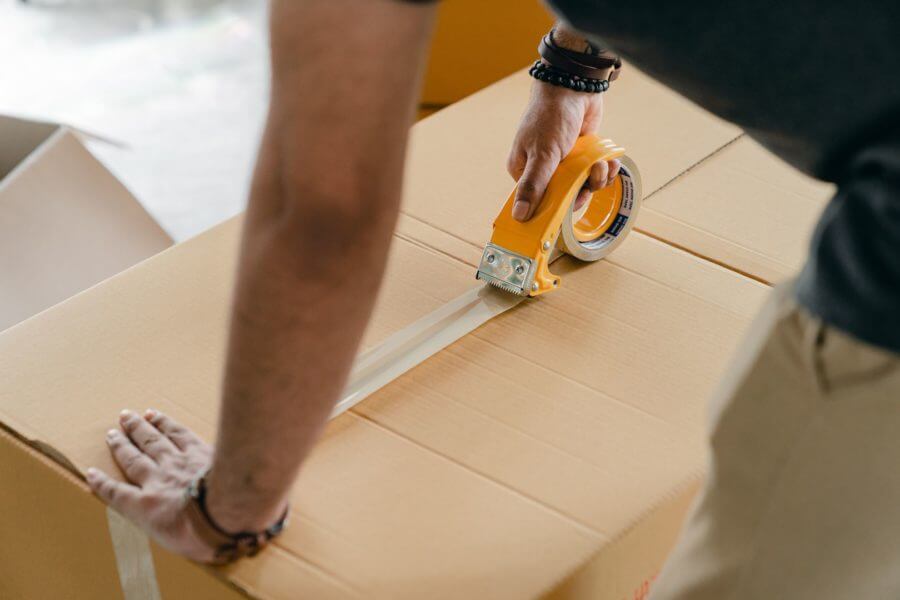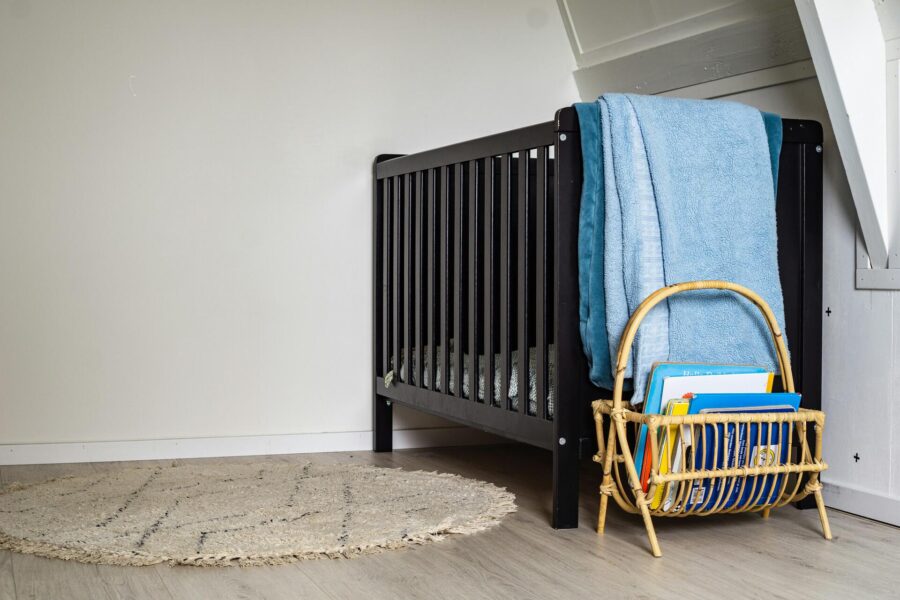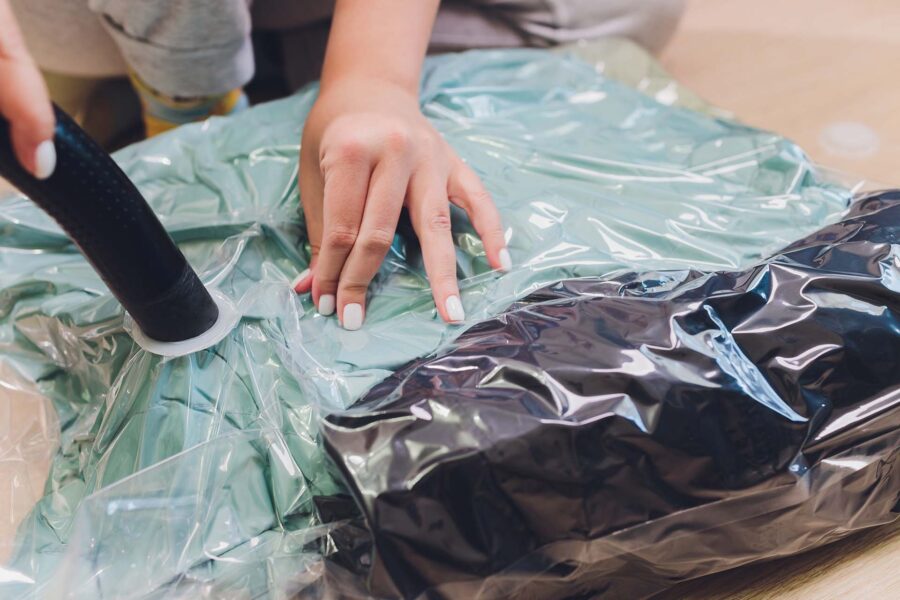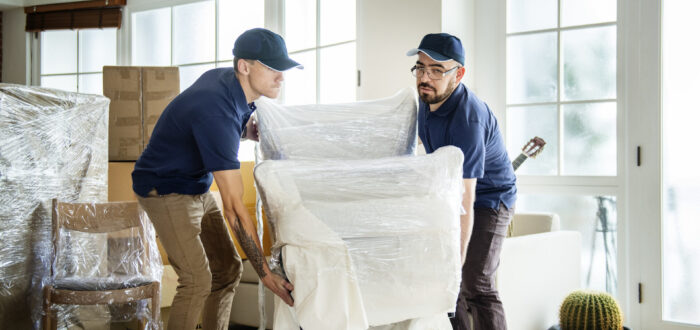

How to Pack Bedding for Moving
Posted in How-to on October 23, 2024
If you want to get your sheets, duvets, and pillows ready for the long journey ahead, you must learn how to pack bedding for moving. By using the right techniques and taking a little time to plan ahead, you’ll ensure that everything stays neatly packed and ready to be put to use as soon as you settle in. After all, a good night’s sleep in your new home starts with well-packed bedding – and we’ll help you get there.
How to Pack Bedding for Moving Across the Country
Start the process by sorting through your items, decluttering anything you don’t need, and categorizing it by type. Use effective folding or rolling techniques to save space, especially for fitted sheets and blankets. Place pillows in medium-sized boxes, ensuring they aren’t squished to preserve their shape.
For duvets and comforters, use large boxes or bins to protect them from dust and moisture. Keep your first-night essentials separate for easy access, and don’t forget to label your boxes for a smooth unpacking process. If you’re feeling overwhelmed, consider hiring professional long-distance movers who will ensure everything is secure and organized for the journey.
Why Packing Bedding Properly Is Important
When preparing for a relocation, bedclothes, pillows, and other similar items might seem like one of the easier things to pack. Still, taking the time to deal with each of them the right way can save you time and stress later on. Remember – improperly packed linens can quickly turn into a disorganized heap by the time you move to a new home.
Imagine arriving at your destination and finding your carefully folded sheets and blankets mixed with dust, dirt, or even damaged. Not only that but without protective packing, your stuff can be exposed to moisture, which can lead to mildew or odors. Proper boxing up ensures that everything stays fresh, clean, and ready to use as soon as you unpack after relocating.
Efficient packing isn’t just about keeping everything clean – it’s about maximizing space. Bulky blankets, pillows, and comforters take up a lot of room if not packed correctly. By folding or rolling items strategically and using space-saving tools, you can significantly reduce the volume bedding occupies, ultimately reducing your relocation expenses.

What You’ll Need to Pack Bedding Efficiently
Having all the necessary packing materials can make a big difference in how smoothly the long-distance moving process goes. To pack efficiently, you’ll need to gather a few key supplies, such as:
- Sturdy cardboard boxes or plastic bins – they need to be large enough to hold blankets, pillows, and sheets without squishing them,
- Vacuum-seal bags – ideal for reducing the bulk of larger items like comforters and pillows,
- Packing paper or plastic wrap – to wrap delicate fabrics and keep them clean,
- Labels and markers – so you can easily identify which boxes contain your linens and pillows,
- Tape – for securing the boxes and keeping everything tightly sealed.
Deciding Where to Store Your Items Properly
What are the best-sized boxes for relocating bedding? For smaller items like sheets and pillowcases, standard-sized cardboard boxes work just fine. However, larger items like comforters and blankets require more space, so using large boxes is advisable.
Additionally, if you plan to move in winter or are expecting rain on the relocation day, keep in mind that plastic bins can offer extra protection from both dust and moisture. If you’re looking to save as much space as possible, vacuum-seal bags are a game-changer. They compress your bedclothes, minimizing their size and allowing you to pack more efficiently.
Once sealed, you can place these bags in any container without worrying about bulk. That being said, note that natural fibers like wool, fur, silk, and cashmere are delicate and need airflow to maintain their original form. Therefore, don’t use vacuum bags if your bedclothes (or some of their parts) are made from these materials.

Declutter Before Boxing Up
Bedclothes, like many household items, can accumulate over time, often without us realizing it. From old, worn-out sheets to mismatched pillowcases, you may find you have more of these items than you need or use regularly. Decluttering helps you avoid boxing up and transporting unnecessary items, which can help you save money on relocation costs.
Moving cross-country is the perfect time to discard any sheets, pillows, or duvets you no longer need. Start by assessing each piece. Ask yourself if it’s still in good condition, whether you use it regularly, and if it fits with your style. Additionally, if you’re relocating to a different climate, consider if they fit the new weather conditions.
When downsizing for a relocation, think about donating gently used items you previously decided to get rid of. You can choose Goodwill or some other charity organization and gift bedclothes to those in need. Older items that are not in such great condition can be repurposed as cleaning rags or pet bedding.
Sort Bedding Into Different Categories
Begin by laying out all your bedding, including sheets, blankets, comforters, pillows, and any other linens you may have. Categorize them by use – everyday essentials, guest linens, seasonal items, and any decorative pieces. If you’re relocating your family to another state, make sure to categorize these items by whom they belong to, as well.
By sorting, you’ll also have a clearer idea of how many boxes or containers you’ll need and what items should be packed together. Not only that, but sorting everything out at the start saves time, reduces relocation stress, and ensures that unpacking is a breeze.

How to Box Up Specific Bedding
The right packing strategies are essential when you’re relocating to a new city across the country and need to move your whole life there. Whether you’re preparing sheets, pillows, or large comforters, taking the time to secure everything properly will help protect your items from damage and save space.
When it’s time to deal with your sheets and pillows, there are different techniques you can use. Here are some relocation tips on how to pack bedding for relocation properly, according to their type:
Folding and Rolling Techniques for Sheets and Blankets
By folding sheets and blankets into neat, compact shapes, you reduce their overall size, making them easier to stack and fit into boxes. This method works particularly well for flat sheets, throws, and lightweight blankets.
Rolling is another space-saving technique, particularly useful for fitted sheets, which can often be tricky to fold neatly. Rolling helps minimize wrinkles, as the fabric is less likely to crease when tightly rolled, and it keeps your boxes organized.
Packing Pillows and Cushions the Right Way
When it comes to dealing with pillows and cushions, maintaining their shape is key to ensuring they stay comfortable and usable after you relocate to a new state. Compressing pillows too tightly, especially soft or delicate ones, can lead to permanent deformations, leaving them flat and less supportive. To prevent this, avoid squeezing pillows into boxes or bins that are too small for them, as this can cause them to lose their natural fluff and form.
Instead, opt for medium-sized boxes or bins that allow the pillows to rest comfortably without being squished. For larger or decorative cushions, use spacious containers where they can lay flat or be stacked with minimal pressure.
If you’re packing particularly delicate or high-quality pillows, consider wrapping them in bubble wrap or packing paper to protect them from dust and dirt during the move. This extra step not only keeps them clean but also provides a buffer against any pressure from other items in the box.
Protecting Duvets and Comforters From Dust and Moisture
Duvets and comforters are typically the bulkiest, and they can be easily damaged or dirtied without proper packing. Therefore, it’s important to choose large boxes or storage bins that can accommodate their size without squashing them.
Storing Bedding for a Long-Distance Relocation
During a long-distance move, it’s easy to lose track of what’s packed in each box, especially if your relocation inventory is vast. To avoid confusion, clearly label all boxes containing bedclothes and other similar items with detailed descriptions of their contents. Keep in mind that labels like “Master Bedroom Linens” or “Guest Room Sheets” can make unpacking far more efficient. This ensures that you won’t have to rummage through several boxes just to find what you need for a specific room.
Keep the Bedding for the First Night Accessible
No matter how well you plan a move, unpacking everything on the first day is nearly impossible, especially when it comes to long-distance relocation. Therefore, you’ll need to prepare a box or a bag with relocation essentials and make it easily accessible for the first night.
When it comes to bedding, this box should contain the basics for a good night’s sleep, including sheets, pillows, blankets, and any other items you’ll need immediately upon arrival. Make sure this box is clearly labeled and set aside so it doesn’t get buried under other moving boxes. This way, you’ll have a cozy, comfortable place to sleep as soon as you settle into your new home.

Additional Tips for Moving Bedclothes and Pillows Without Stress
Clean bedclothes not only ensure freshness upon arrival but also help prevent any unpleasant odors or mildew from developing during transit – so give them a thorough wash before you box them up.
Once washed, make sure your linens and pillows are completely dry before packing to avoid moisture getting trapped, which could lead to mold or damage. This simple step will save you from having to deal with cleaning everything when you get to your new home, allowing you to settle in more quickly.
Additionally, note that seasonal bedclothes, such as heavy winter blankets or lightweight summer sheets, can take up a lot of unnecessary space if packed together with your everyday items. To avoid this, box up seasonal items separately and label those boxes clearly. This way, you won’t need to unpack them immediately when you arrive at your new home – they can stay stored until needed.
Trust the Experts to Pack Your Bedding (And the Rest of Your Belongings)
Planning a move to a new state involves a lot of coordination and can quickly become overwhelming, which is why most people opt for getting professional help. However, if you’ve already decided to get cross-country moving services to help you relocate to a new state, why not let professionals handle the packing, as well?
Hiring a reliable relocation company, such as Cross Country Movers, and getting packing services can make a significant difference. Movers have the experience and know how to box up your items securely, ensuring each one of them is protected throughout the move. Not only that, but by trusting professionals to handle your bedclothes and pillows – and everything else – you’ll have more time and energy to focus on other important aspects of your move.
Simplify Your Relocation With the Right Help
While packing bedding might seem simple, it’s just one small part of a larger, often demanding process. The simple and most effective solution for easing the relocation is to hire one of the best relocation companies – and Cross Country Movers is at the top of that list. Our team knows how to deal with each one of your belongings – and will do everything to ensure they stay safe and organized.
With our help, you can take a breather and focus on the exciting parts of your move, like settling into your new home. Don’t sweat the details – contact us today, and let our experienced movers make your relocation a breeze!





